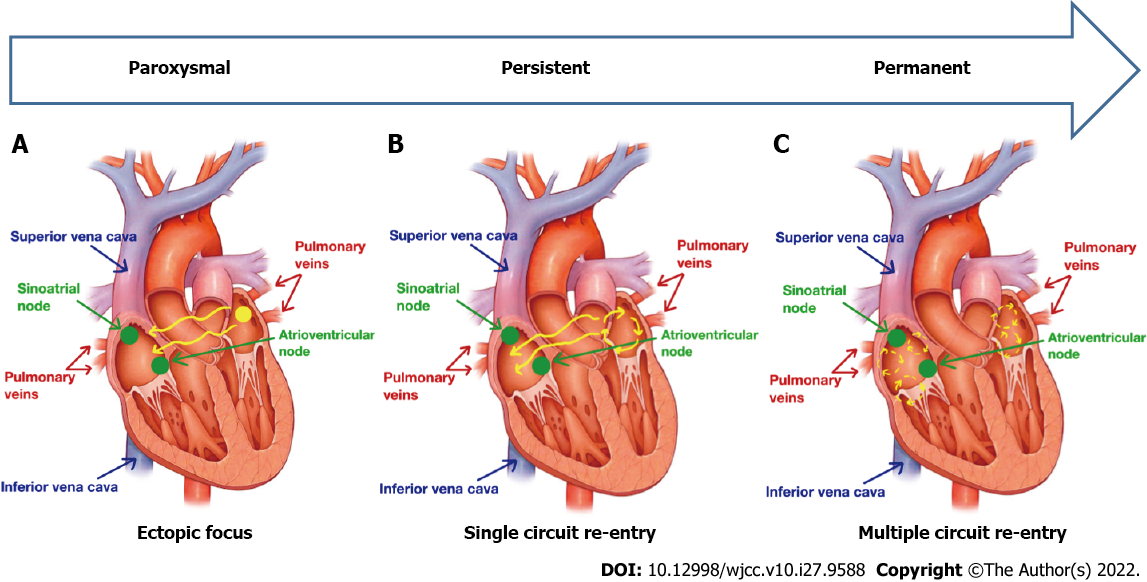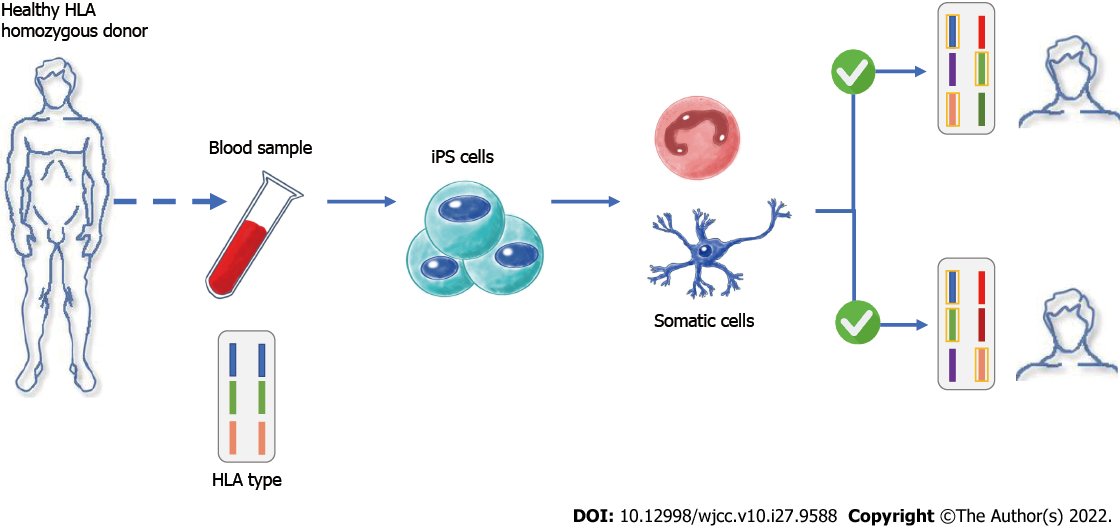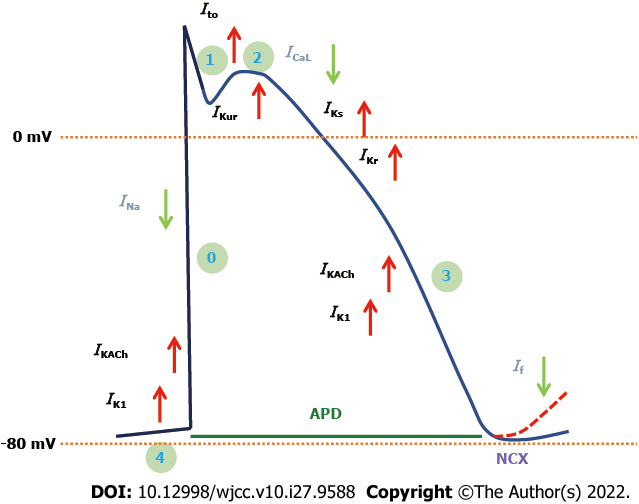Copyright
©The Author(s) 2022.
World J Clin Cases. Sep 26, 2022; 10(27): 9588-9601
Published online Sep 26, 2022. doi: 10.12998/wjcc.v10.i27.9588
Published online Sep 26, 2022. doi: 10.12998/wjcc.v10.i27.9588
Figure 1 Progression in atrial fibrillation mechanisms over time.
A: Local ectopic focus; B: Single circuit re-entry; C: Multiple circuit re-entry. Paroxysmal atrial fibrillation (AF) is mostly underpinned by local triggers, particularly from pulmonary veins. Re-entry substrates (first functional, then structural) prevail as AF becomes more persistent and, finally, permanent.
Figure 2 Reprogramming of human somatic cells, such as fibroblasts, into human induced pluripotent stem cells is compared with the inner cell mass of embryonic stem cells.
Figure 3 Concept of human induced pluripotent stem cells banks, where blood samples are taken from a “super donor”.
Cells from the blood samples are reprogrammed into clinical-grade human induced pluripotent stem cells, which can be distributed to recipients for regenerative medicine.
Figure 4 Action potential of cardiac muscle.
Red arrow up represents outward current, green arrow down represents inward currents. Action potential has 5 states: 4, resting; 0, upstroke; 1, early repolarization; 2, plateau; 3, final repolarization. APD: Action potential duration; ICaL: L-type Ca2+ current; If: Pacemaker current; IK: Delayed rectification currents; IK1: Inward rectifier current; IKACh: Acetylcholine-activated inward-rectifying potassium current; IKr: Rapid; IKs: Slow; IKur: Ultra-rapid; INa: Sodium current; Ito: Transient outward current; NCX, Na +/Ca2+ exchanger.
- Citation: Leowattana W, Leowattana T, Leowattana P. Human-induced pluripotent stem cell-atrial-specific cardiomyocytes and atrial fibrillation. World J Clin Cases 2022; 10(27): 9588-9601
- URL: https://www.wjgnet.com/2307-8960/full/v10/i27/9588.htm
- DOI: https://dx.doi.org/10.12998/wjcc.v10.i27.9588












